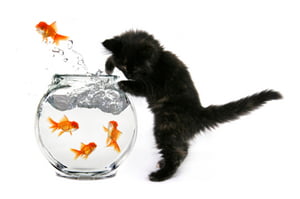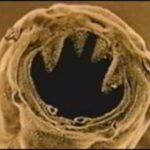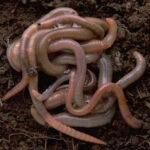Internal parasites in cats can be hard to detect. Not all parasites produce symptoms, but also, many cats are well adapted to hiding their symptoms until they are extremely ill. A responsible cat owner should be aware of any potential types of internal parasites, their symptoms and treatments.
Feline Bladder Worm
Bladder worms are rare, only occasionally infecting cats. Unfortunately, this parasite generally does not produce any signs of disease in the affected cat. Symptoms that may occur would be similar to the symptoms of a bladder infection: frequent urination, painful urination or blood in the urine.
As of September 2010, there are no approved feline bladder worm treatments. Veterinarians may choose to use an oral dose of ivermectin to kill off these parasites.
Giant Kidney Worm in Cats
Reaching lengths of up to three feet, the Giant Kidney Worm is not a common internal parasite in cats. Unfortunately, most cats with this parasite are diagnosed post mortem. This is because though the worm produces severe damage to one of the kidneys, the other kidney will compensate for the loss of the infected kidney. Living cats who are diagnosed will require surgery to remove the worm or the entire kidney, depending on the severity of damage that has occurred.
Feline Heartworms
Heartworms affect the cat’s heart but also the cat’s respiratory system. These worms can result in inflammation to both the heart and lungs, coughing, difficulty with breathing, changes in heart rate, vomiting, loss of appetite, weight loss, convulsions and death.
The best treatment for heartworms is prevention. However, depending on the severity, the cat may require surgical removal of the worms or a treatment course of anti-inflammatory medications and heartworm prevention medications. X-rays and blood tests will be given every 6 months to monitor the progress of the worms as they die off.
Hookworms in Cats
Hookworms are common in cats, especially in young cats and kittens. Their mouths feature teeth-like structures that they use to attach to the internal walls of the feline intestines. Feline hookworms can result in anemia (pale gums, weakness,) diarrhea, dark feces, stunted growth in young kittens and dull, dry fur. Death can also occur in severe infestations.
Hookworms, like tapeworms and roundworms, are killed at the veterinarian’s office using a deworming medication.
Feline Roundworms
Roundworms are the most common internal parasites infecting cats and are easily transmitted through pets via contaminated foods, through the milk of an infected mother or through the ingestion of an infected host such as an heartworm.
Feline roundworms steal nutrients from the infected cat resulting in symptoms such as thinning, dull fur, anemia, coughing, vomiting and a pot-bellied appearance. Some cats, however, may be asymptomatic, meaning there are no symptoms present. Treatment must be done twice, two or four weeks apart, using a deworming medication for feline roundworms.
Tapeworms in Cats
Tapeworms are relatively well-known parasites. In a cat, symptoms can vary based on the severity of the infection. This can include pain in the abdominal region, vomiting, nervousness or dragging the anal area along the floor to relieve itching.
Fortunately, tapeworms can be treated at the veterinarian with a deworming medication.
Feline Whipworms
Whipworms, though common in dogs, are relatively rare in cats. Cats become infected through the ingestion of contaminated food or water. These parasites can produce severe symptoms such as anemia or bloody stool; though most cats who are infected will not show any symptoms of infection.
Whipworms are not treated using traditional dewormer medications. The cat’s overseeing veterinarian will need to make the decision on which medication is appropriate for the individual cat’s situation.
Additional Information:
Pet Education: Cat Articles








